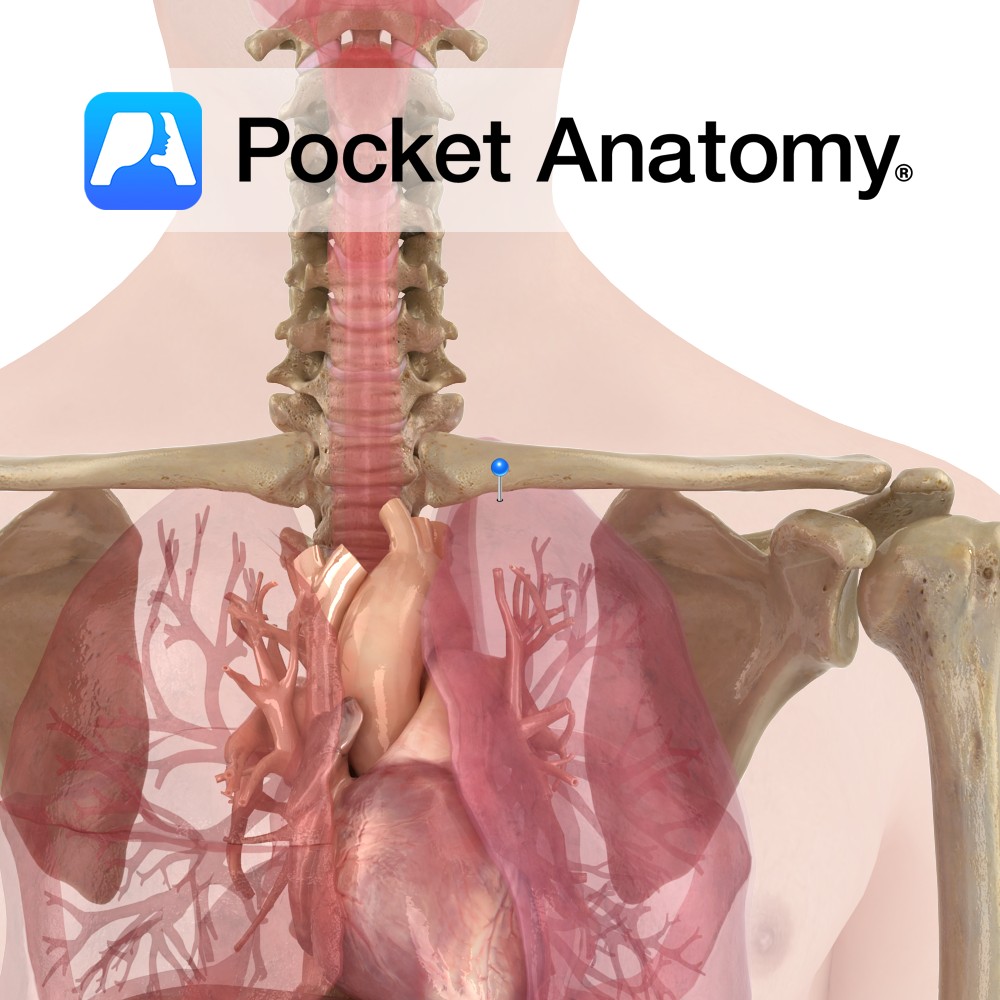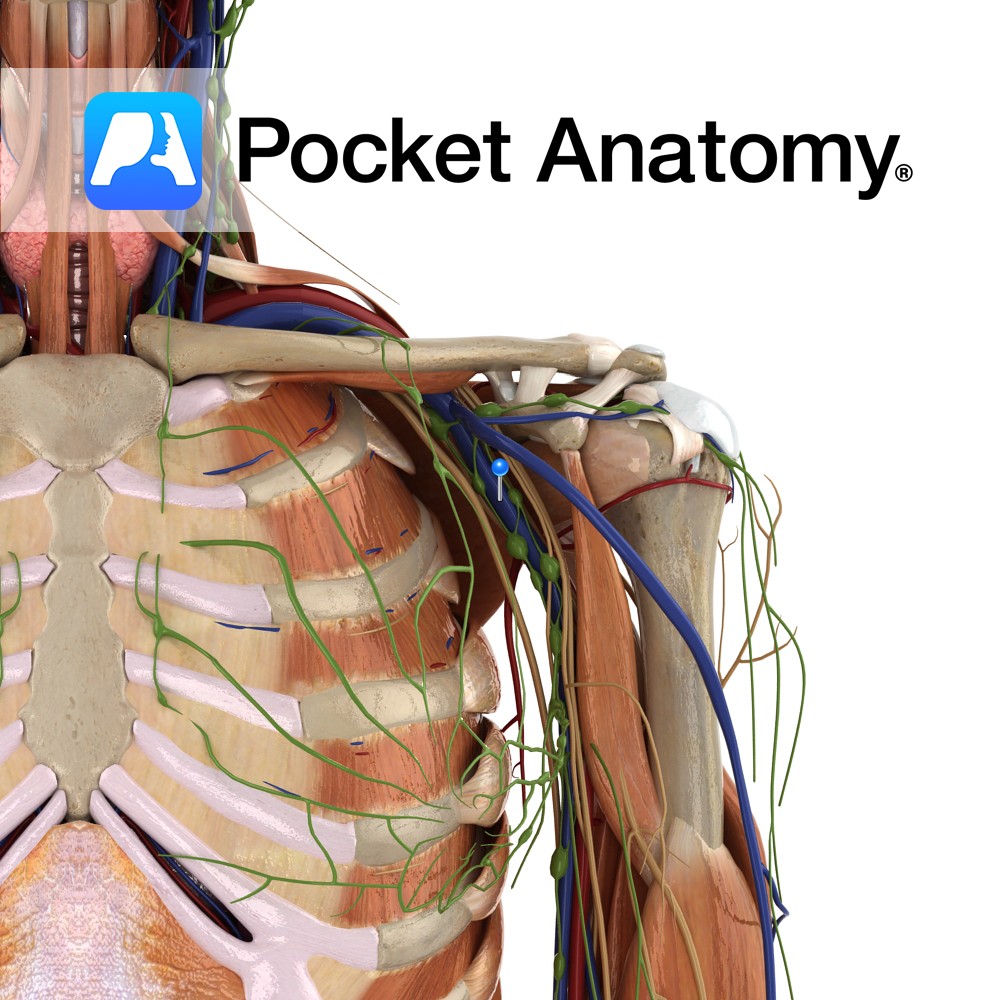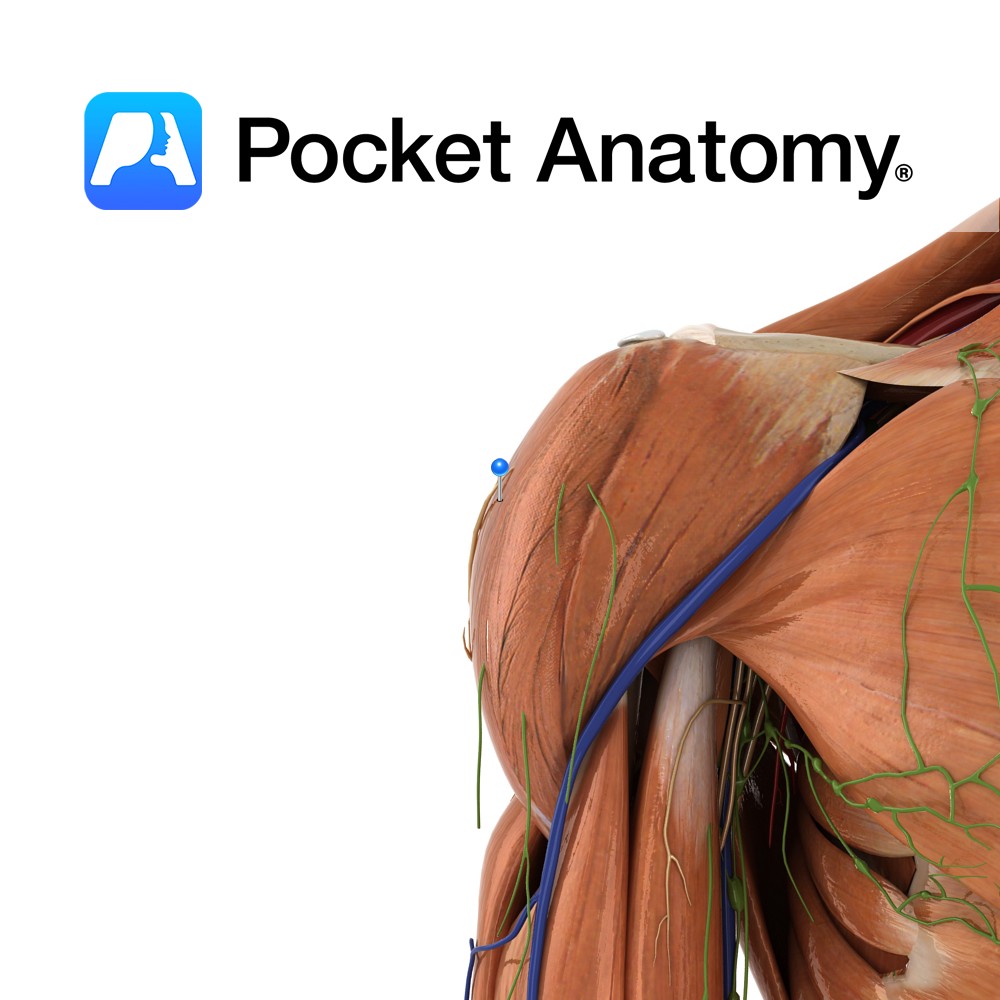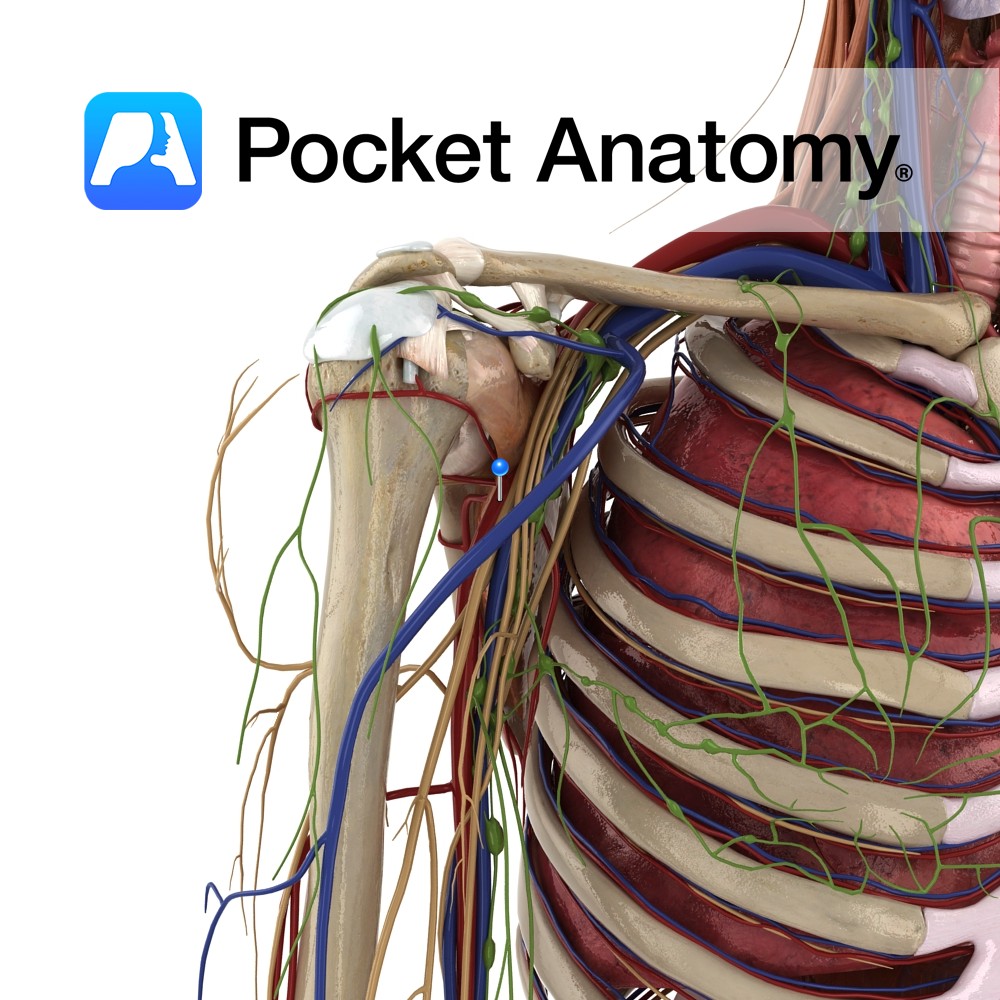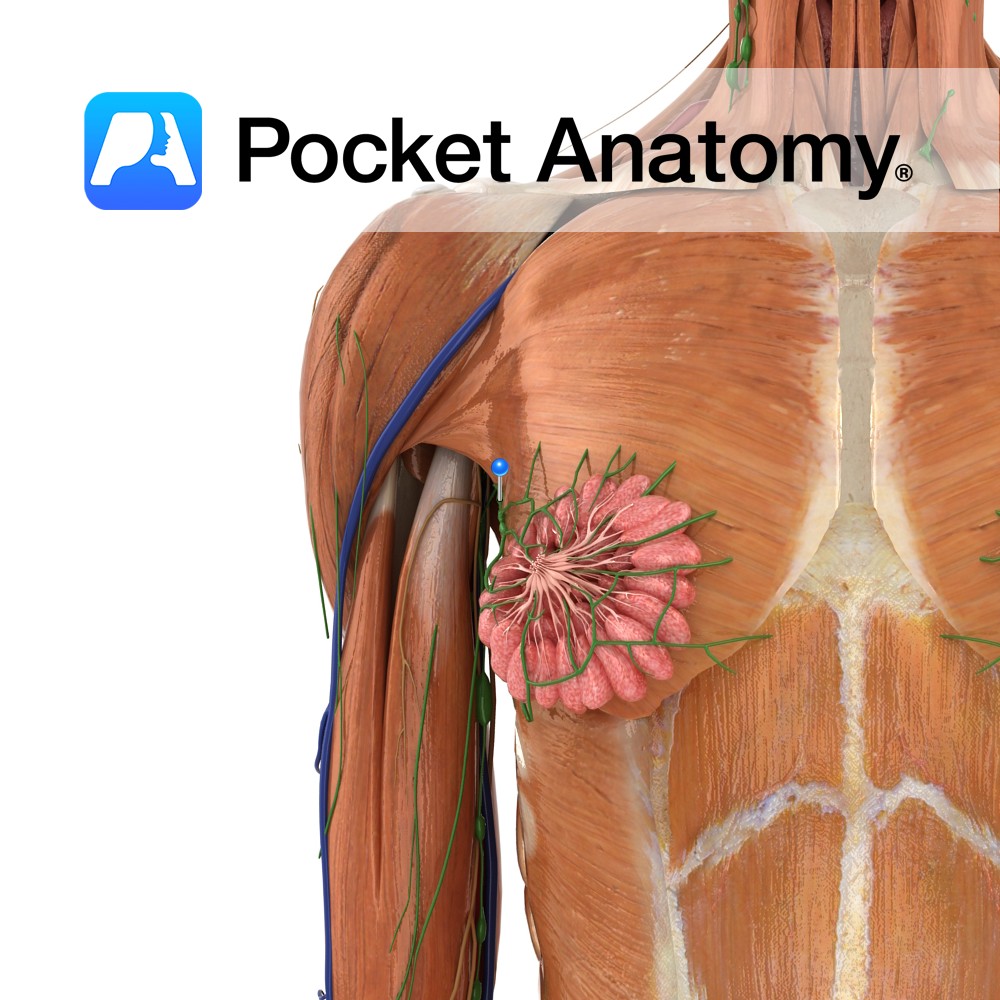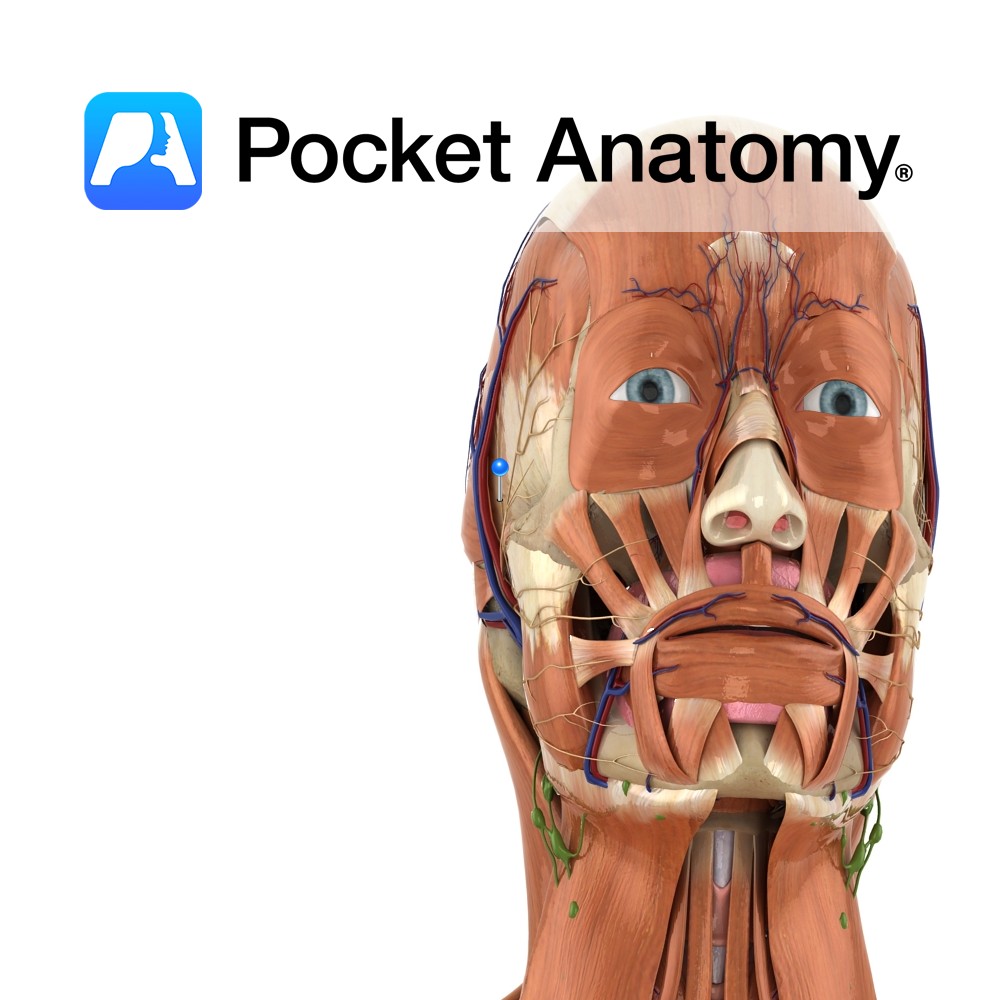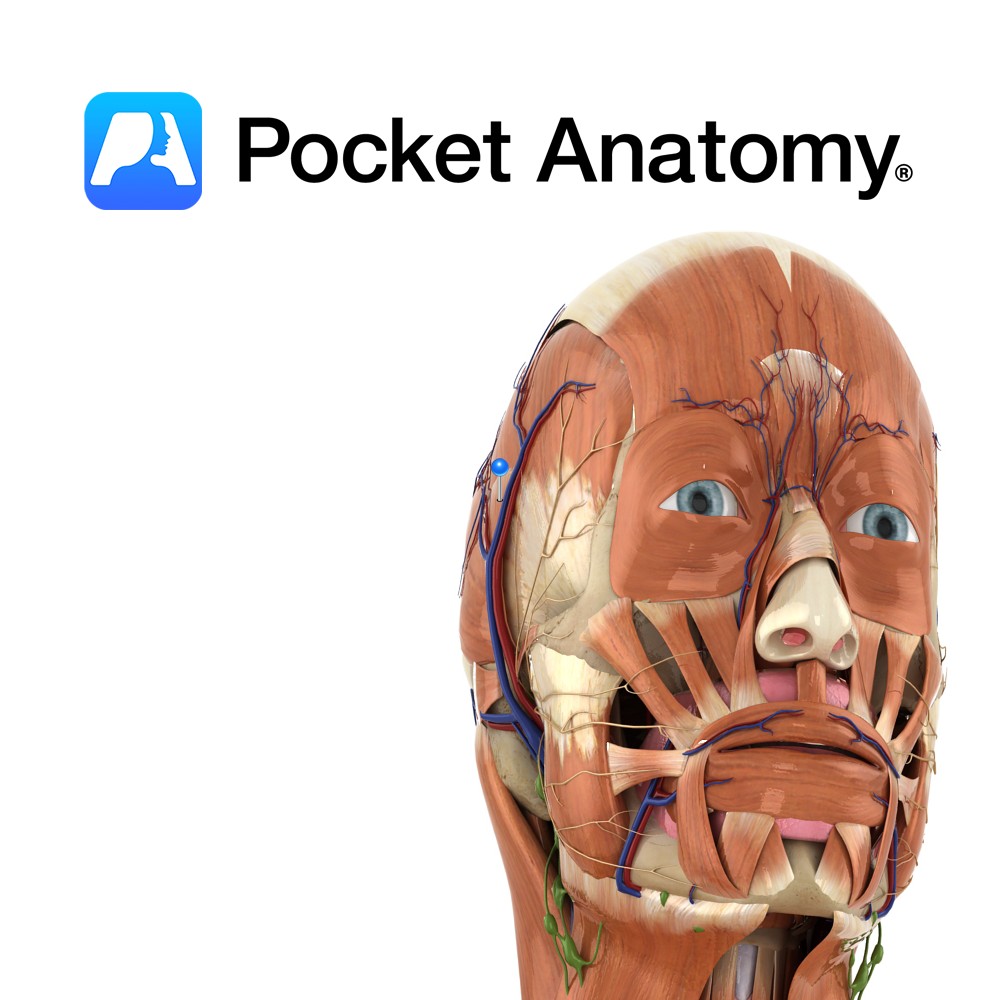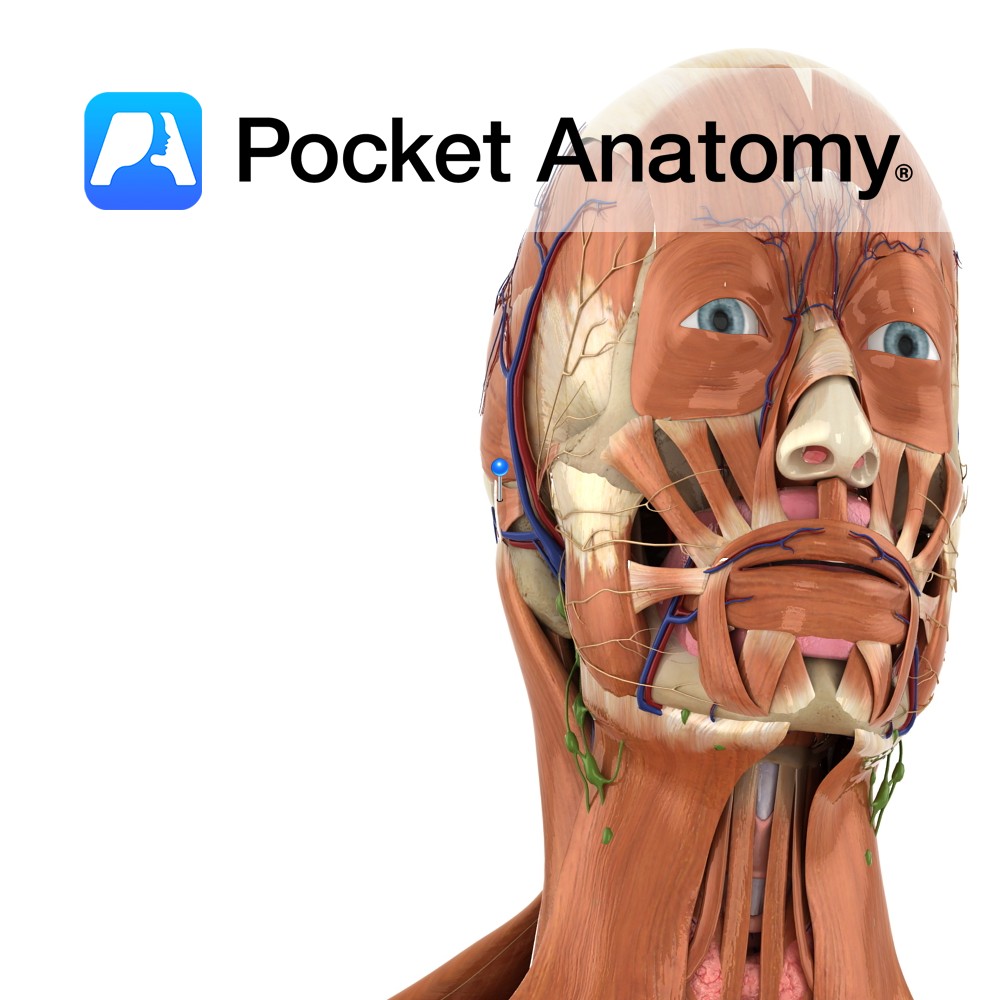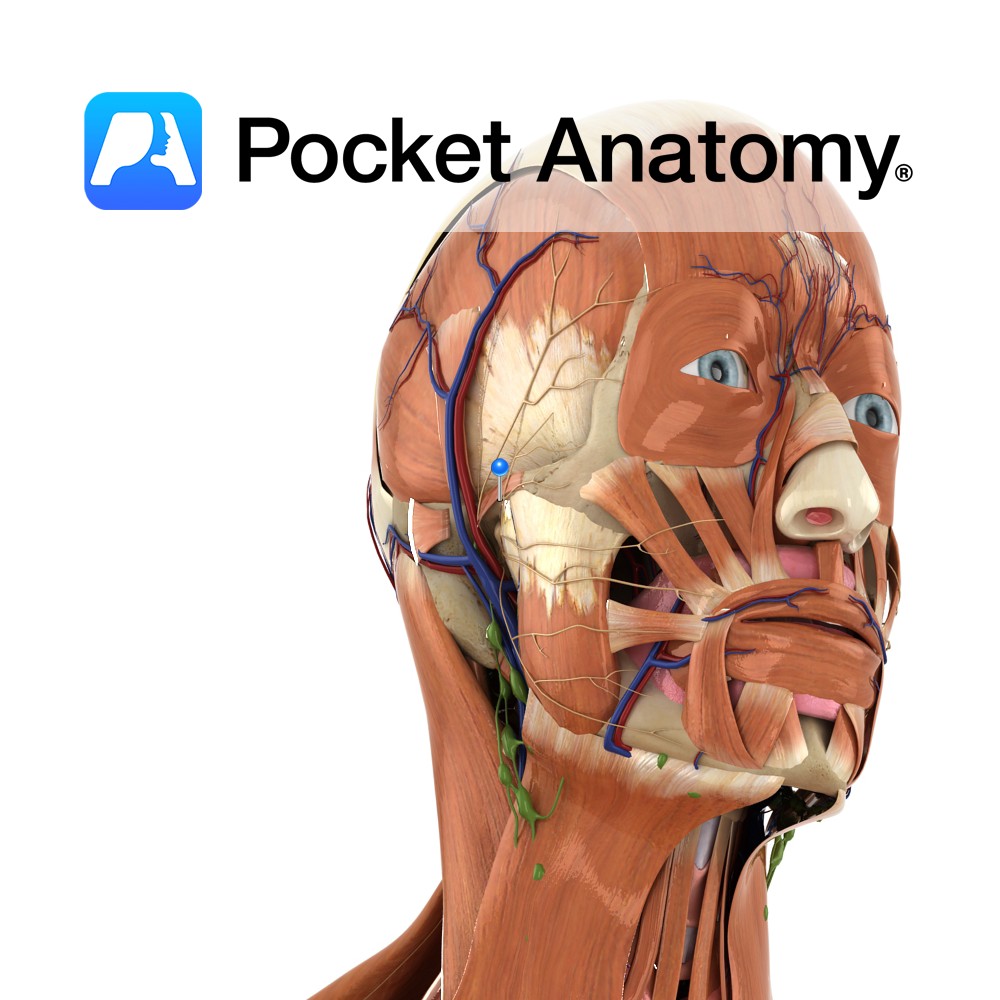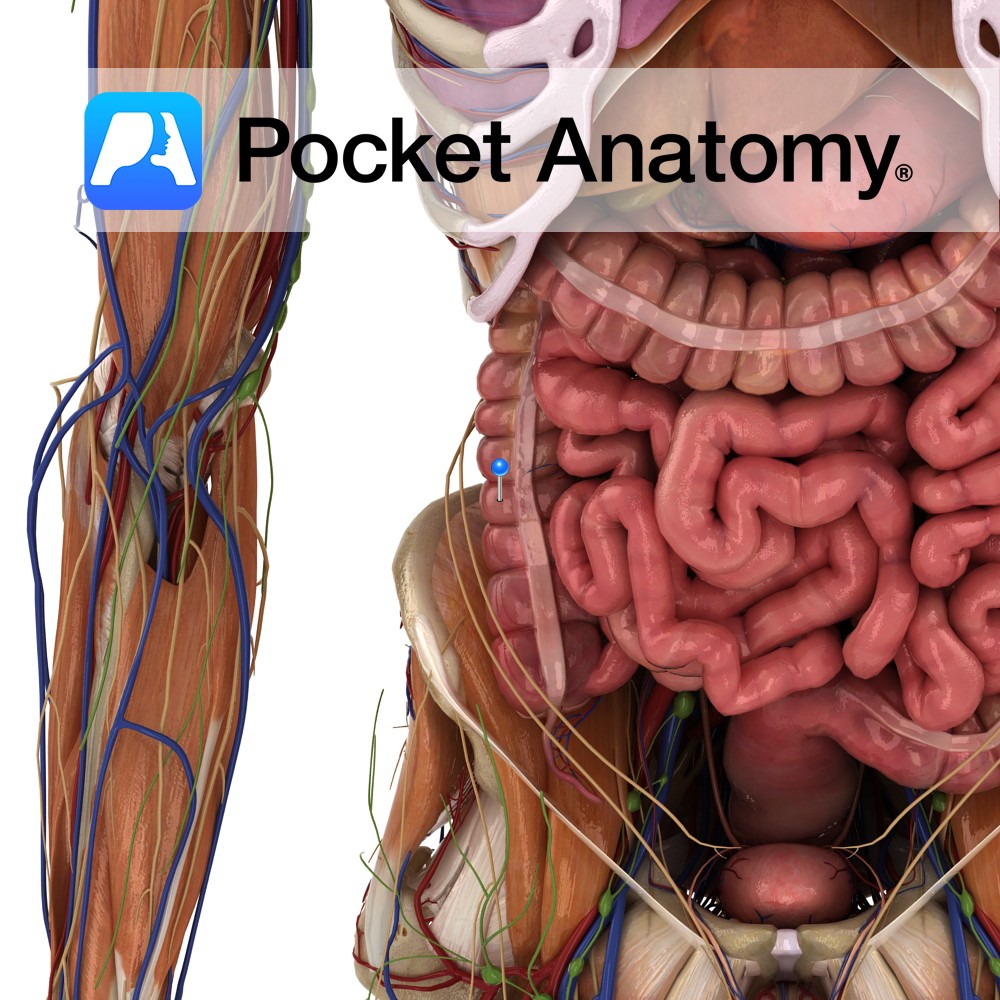PocketAnatomy® is a registered brand name owned by © eMedia Interactive Ltd, 2009-2022.
iPhone, iPad, iPad Pro and Mac are trademarks of Apple Inc., registered in the U.S. and other countries. App Store is a service mark of Apple Inc.
Functions The ventilation /perfusion ratio is higher at the apex of the lung, meaning more air reaches the apex than blood to carry it. paCO2 is decreased and paO2 increased in this area (similar findings to pulmonary embolism or emphysema, though not pathological). Moderate exercise increases perfusion in the apical lung, hence increasing V/P ratio.
- Published in Pocket Anatomy Pins
Anatomy Course Continuation of the brachial vein as it passes the teres major muscle. Along with its corresponding artery it travels through the axilla until it reaches the lateral aspect of the first rib, where it becomes the subclavian vein. Drain Receives superficial veins of the area such as the basilic and cephalic veins. Interested
- Published in Pocket Anatomy Pins
Anatomy The axillary nerve arises from the posterior cord of the brachial plexus and exits through the quadrangular space along with the anterior circumflex humeral artery and posterior circumflex humeral vein. Supply Supplies the deltoid, teres minor and triceps brachii (long head), as well as carrying sensory information from the skin covering the inferior region
- Published in Pocket Anatomy Pins
Anatomy Course Continuation of the subclavian artery after it passes the lateral margin of the first rib. It passes through the axillary inlet in association with the axillary vein, which is anterior to the artery. Separated into three parts by the pectoralis muscles. Supply Supplies the distal aspect of the arm. Clinical Fracture of the
- Published in Pocket Anatomy Pins
Anatomy Cluster/group of nodes, in armpit. Afferent vessels bring lymph from arm, thoracic walls, breast, upper parts of abdominal walls. Efferent vessels pass filtered lymph on via the Subclavian Trunk to the Lymphatic (Thoracic) Duct; R empties into the R Subclavian Vein, L into L Brachiocephalic (aka Innominate) Vein, each through semilunar valves (which prevent
- Published in Pocket Anatomy Pins
Anatomy Course Composed of two different roots of the mandibular nerve, which pass along both sides of the middle meningeal artery. It travels with the superficial temporal artery and vein to the neck of the mandible. It then travels anteriorly to cross the zygomatic process of temporal bone giving off branches along its route. Supply
- Published in Pocket Anatomy Pins
Anatomy Origin: Epicranial aponeurosis on the lateral aspect of the head. Insertion: Upper part of the auricle. Key Relations: Lies superior to the ear on the lateral surface of the head. Functions Elevates the ear. Supply Nerve Supply: Facial nerve (CN 7) Blood Supply: Superficial temporal artery. Interested in taking our award-winning Pocket Anatomy app
- Published in Pocket Anatomy Pins
Anatomy Origin: Mastoid process of temporal bone. Insertion: Convexity of the concha of the ear. Key Relations: Lies posterior to the ear on the lateral surface of the head. Functions Retracts and elevates the ear. Supply Nerve Supply: Facial nerve (CN 7) Blood Supply: Posterior auricular artery. Interested in taking our award-winning Pocket Anatomy app
- Published in Pocket Anatomy Pins
Anatomy Origin: Anterior part of the temporal fascia. Insertion: Helix of the ear. Key Relations: Lies on the anterolateral surface of the head. Functions Pulls the ear upward and forward. Supply Nerve Supply: Facial nerve (CN 7) Blood Supply: Superficial temporal artery. Interested in taking our award-winning Pocket Anatomy app for a test drive?
- Published in Pocket Anatomy Pins
Anatomy Continuous with cecum, extends up right side of abdomen, extra- peritoneally, crossing iliacus and quadratus lumborum and aponeurosis of transversus abdominis, to colic impression under right lobe liver, lateral to gall bladder, where it forms hepatic (right colic) flexure by bending anteriorly and medially (to left) and continuing as the transverse colon. Interested in
- Published in Pocket Anatomy Pins

